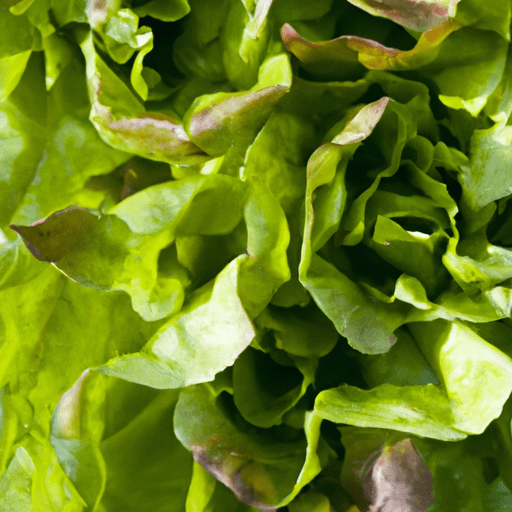Babyleaf Lettuce: A Delicate and Nutritious Green
Lettuce is a staple in salads and sandwiches, but have you ever tried the delicate and tender leaves of babyleaf lettuce? This young, vibrant green is not only visually appealing but also packs a flavorful punch. In this blog post, we will explore the taste, common culinary uses, nutritional value, and interesting facts about babyleaf lettuce.
Taste
Babyleaf lettuce, as its name suggests, is harvested in its early growth stages, resulting in delicate and tender leaves. The taste can vary depending on the variety, but most commonly, it exhibits a mild and slightly sweet flavor, with a hint of nuttiness. The leaves are incredibly crisp and refreshing, making them a delightful addition to any dish.
Cooking and Culinary Uses
Babyleaf lettuce is a versatile ingredient that can be incorporated into various culinary creations. Its tender leaves make it ideal for raw consumption, whether it’s for salads, wraps, or as a bed for toppings. Its mild flavor pairs well with a wide range of ingredients, allowing you to experiment and create flavorful combinations.
For a simple and refreshing salad, toss babyleaf lettuce with your favorite dressings, herbs, and seasonal fruits or vegetables. It complements well with citrusy dressings, creamy avocado, tangy goat cheese, and crunchy nuts or seeds. You can also elevate your sandwich game by adding a handful of babyleaf lettuce for a delightful crunch and freshness.
Additionally, babyleaf lettuce can be lightly sautéed or added to stir-fries. This cooking method helps to maintain its delicate texture while imparting a slightly wilted and softened consistency. Pair it with your choice of protein, such as chicken, tofu, or seafood, for a quick and nutritious meal.
Nutritional Value
Babyleaf lettuce is not only a treat for your taste buds but also for your health. It is low in calories and packed with essential nutrients. Here are some key nutritional highlights:
Vitamins and Minerals: Babyleaf lettuce contains a variety of vitamins, including vitamin A, vitamin C, vitamin K, and folate. These vitamins play a vital role in supporting a healthy immune system, strengthening bones, and preventing certain types of cancers.
Antioxidants: This leafy green is a rich source of antioxidants, such as beta-carotene and lutein. These compounds help neutralize harmful free radicals in the body, protecting cells and tissues from damage.
Hydration: With high water content, babyleaf lettuce contributes to your daily hydration needs, keeping your body refreshed and aiding in digestion.
Interesting Facts and History
The cultivation of lettuce dates back to ancient Egypt, where it was prized for its succulent leaves and was believed to have medicinal properties.
Lettuce belongs to the Asteraceae family, which includes daisy and sunflower. These plants produce clusters of small, daisy-like flowers when left to mature.
The term “babyleaf” refers to the young and tender leaves that are harvested in their early stages. This harvesting technique allows farmers to obtain multiple harvests from a single plant.
Babyleaf lettuce comes in various vibrant colors, including green, red, and purple. The colorful leaves not only add visual appeal to your plate but also offer different nutritional profiles.
Now that you have learned all about babyleaf lettuce, it’s time to get creative in the kitchen! Whether you are looking for a light and healthy salad or a vibrant addition to your favorite dish, babyleaf lettuce is sure to add freshness and flavor. So, next time you’re at the grocery store, pick up some babyleaf lettuce and enjoy its delicate taste and nutritious goodness.
Origin: Baby leaf lettuce is believed to have originated in the Mediterranean region. It has been grown and consumed for centuries, with historical evidence of its cultivation dating back to ancient Egypt and Greece.
Common Uses: Baby leaf lettuce is commonly used in salads, sandwiches, wraps, and as a garnish. Its tender, young leaves have a mild and delicate flavor, making it a popular choice for fresh dishes.
Nutritional Benefits: Baby leaf lettuce is rich in vitamins A, C, and K. It also provides essential minerals such as calcium and iron. Additionally, it is a good source of dietary fiber and contains beneficial antioxidants.
Unique Properties: One of the notable properties of baby leaf lettuce is its tender and delicate texture, which sets it apart from mature lettuce varieties. It is typically harvested when the leaves are young and tender, resulting in a milder and more enjoyable eating experience.
Historical Significance: Lettuce, including baby leaf varieties, has played a significant role in various cultures throughout history. The ancient Egyptians considered lettuce as a symbol of fertility and offered it to the god Min. In ancient Greece, lettuce was associated with the god of sleep, Hypnos, and was believed to have sleep-inducing properties.
These are just a few interesting facts about baby leaf lettuce, highlighting its culinary versatility, nutritional benefits, and historical significance.




Use the share button below if you liked it.
It makes me smile, when I see it.